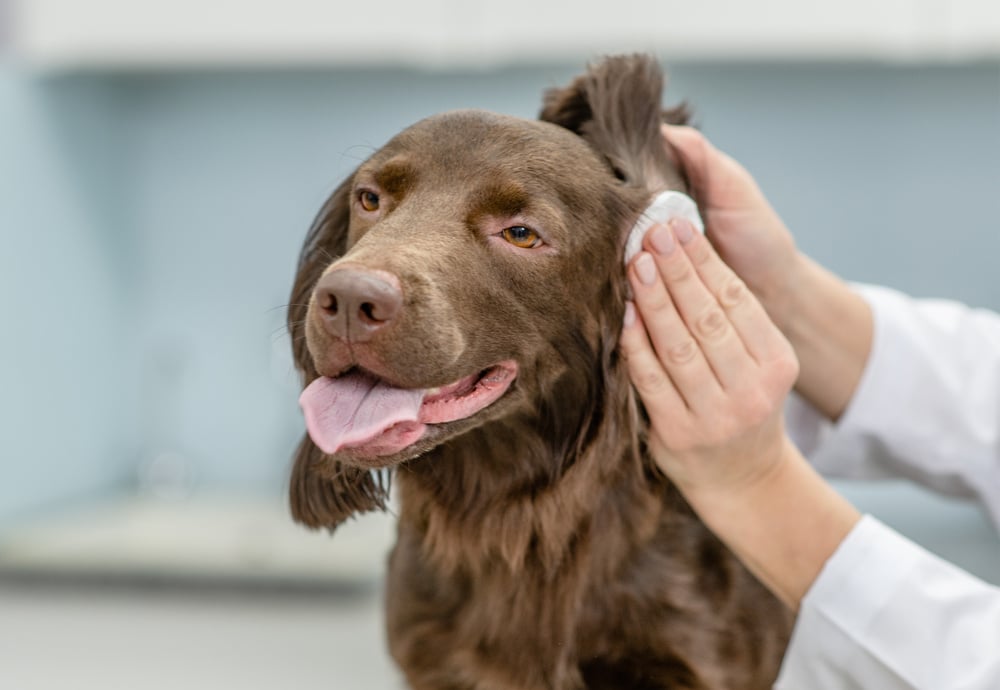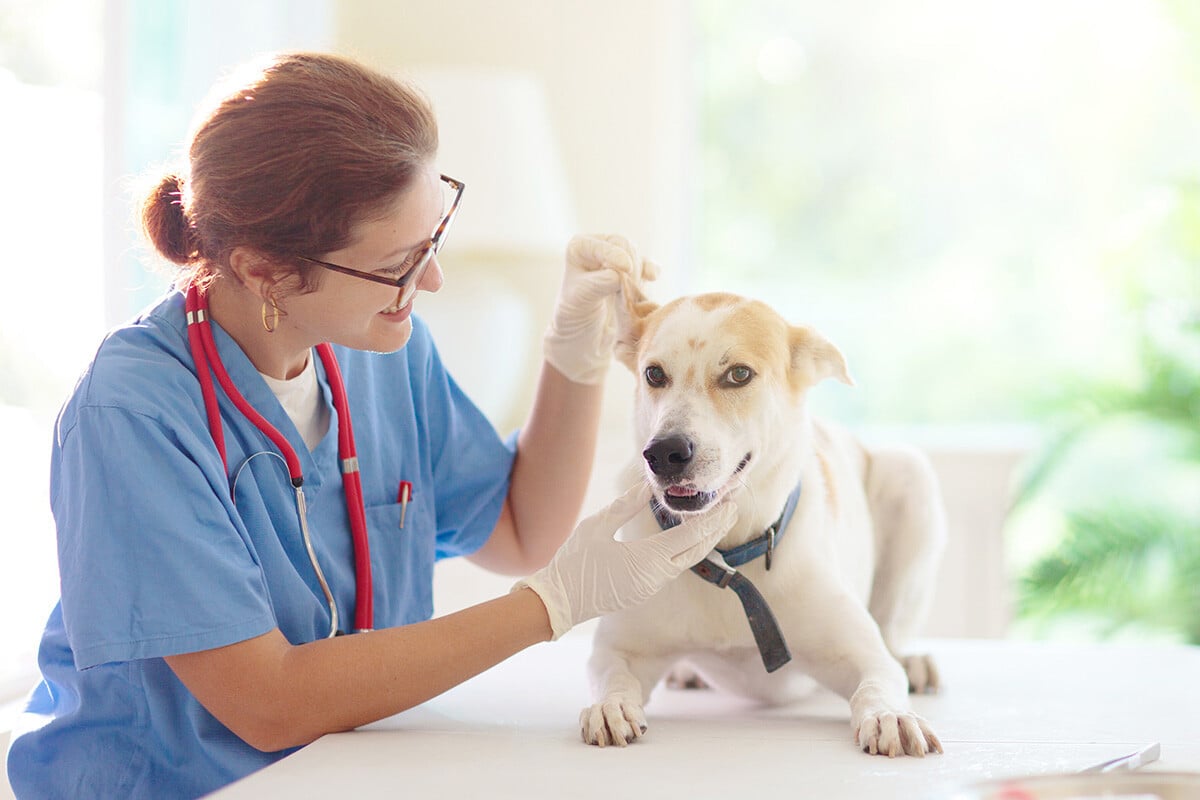
Ear Wax in Companion Animals
Cerumen (ear wax), is a hydrophobic substance secreted by the ceruminous glands in the external auditory canal of mammals. It serves as a protective barrier, trapping debris and possessing antimicrobial properties to maintain the integrity of the ear canal.
In companion animals, particularly canines and felines, the composition and quantity of cerumen can vary based on breed, environmental factors, and underlying health conditions. However, excessive ear wax buildup can lead to discomfort, infections, and underlying health issues.
Causes of Excessive Ear Wax
Excessive cerumen production or inadequate clearance can predispose pets to otic pathologies. Key contributing factors include:
- Anatomical Variations: Breeds with pendulous pinnae or stenotic ear canals, such as Cocker Spaniels and Basset Hounds, exhibit reduced air circulation, fostering a moist environment conducive to cerumen accumulation and microbial proliferation.
- Allergic Dermatitis: Hypersensitivity reactions to environmental allergens or dietary components can incite otic inflammation, leading to hyperplasia of ceruminous glands and increased wax production. Studies have shown that allergic dermatitis is a leading cause of recurrent otitis externa and cerumen overproduction in dogs (Nuttall et al., 2021).
- Infectious Agents: Otitis externa resulting from bacterial (e.g., Staphylococcus spp., Pseudomonas spp.) or fungal (e.g., Malassezia pachydermatis) infections can alter cerumen characteristics, often increasing its volume and changing its consistency. Research on Malassezia pachydermatis suggests that excessive cerumen provides an ideal lipid-rich environment for fungal proliferation (Bond et al., 2020).
- Parasitic Infestations: Infestations with Otodectes cynotis (ear mites) are prevalent in felines and canines, leading to ceruminous otitis characterized by dark, coffee-ground-like exudate.
- Foreign Bodies and Neoplasia: The presence of foreign materials or neoplastic growths within the ear canal can obstruct normal cerumen clearance, resulting in accumulation.
It is caused by a reaction to substances in the environment known as allergens, and it’s a lifelong condition. While there is no cure, effective treatment can still help your companion animal maintain a high quality of life.
Clinical Signs
Patients presenting with cerumen-related otic disorders may exhibit:
- Behavioral Signs: Head shaking, aural pruritus, and signs of discomfort upon palpation of the pinnae.
- Otoscopic Findings: Visualization of erythema, edema, excessive ceruminous discharge, or foreign bodies within the ear canal.
- Auditory Impairment: In cases of significant obstruction, partial hearing loss may be observed.
- Odor from the ears
Diagnostic approach
A comprehensive diagnostic workup should encompass:
- Otoscopic Examination: To assess the integrity of the tympanic membrane and identify any obstructive ceruminous material or lesions.
- Cytological Analysis: Microscopic evaluation of cerumen samples to detect the presence of inflammatory cells, bacteria, yeast, or mites.
Therapeutic Interventions
Management strategies should be tailored based on the underlying etiology:
- Ceruminolytic Agents: Formulations containing surfactants or detergents can emulsify and facilitate the removal of impacted cerumen. A study on canine otitis externa highlighted that proper cerumen control can reduce infection rates and improve long-term ear health outcomes (Olivry et al., 2019).
- Antimicrobial Therapy when applicable based on culture and sensitivity results to address specific pathogens.
- Anti-inflammatory Medications when applicable to reduce pain and facilitate application of other agents.
- Parasiticides when applicable.
- Surgical Intervention: In cases involving neoplasia or irreversible canal pathology, surgical options may be considered.
Preventative Measures and Client Education
Educating pet owners on routine ear care is pivotal in preventing cerumen-related issues:
- Regular monitoring: Owners should be instructed on how to perform periodic inspections of their pet's ears for signs of wax buildup, odor, or discomfort.
- Appropriate cleaning practices: Utilization of veterinarian-recommended ear cleaning solutions can aid in maintaining ear hygiene without disrupting the normal microenvironment.
- Addressing predisposing factors: Management of underlying conditions such as allergies through dietary modifications or immunotherapy treatment.
- Regular veterinary check-ups for early detection of problems
Product selection for ear wax cleaning
Effective cerumen management requires products that efficiently cleanse, using surfactants to emulsify and break down impacted cerumen while maintaining the ear’s protective barriers. Here are the products to keep on hand:
Otoact® a ceruminolytic solution enriched with squalene, specifically formulated to dissolve excessive ear wax without irritating the ear canal.
Otoprof®, contains carbamide peroxide, which releases oxygen to soften and remove hardened cerumen. Best used in cases of severe cerumen impaction, followed by flushing. In-clinic use only.
